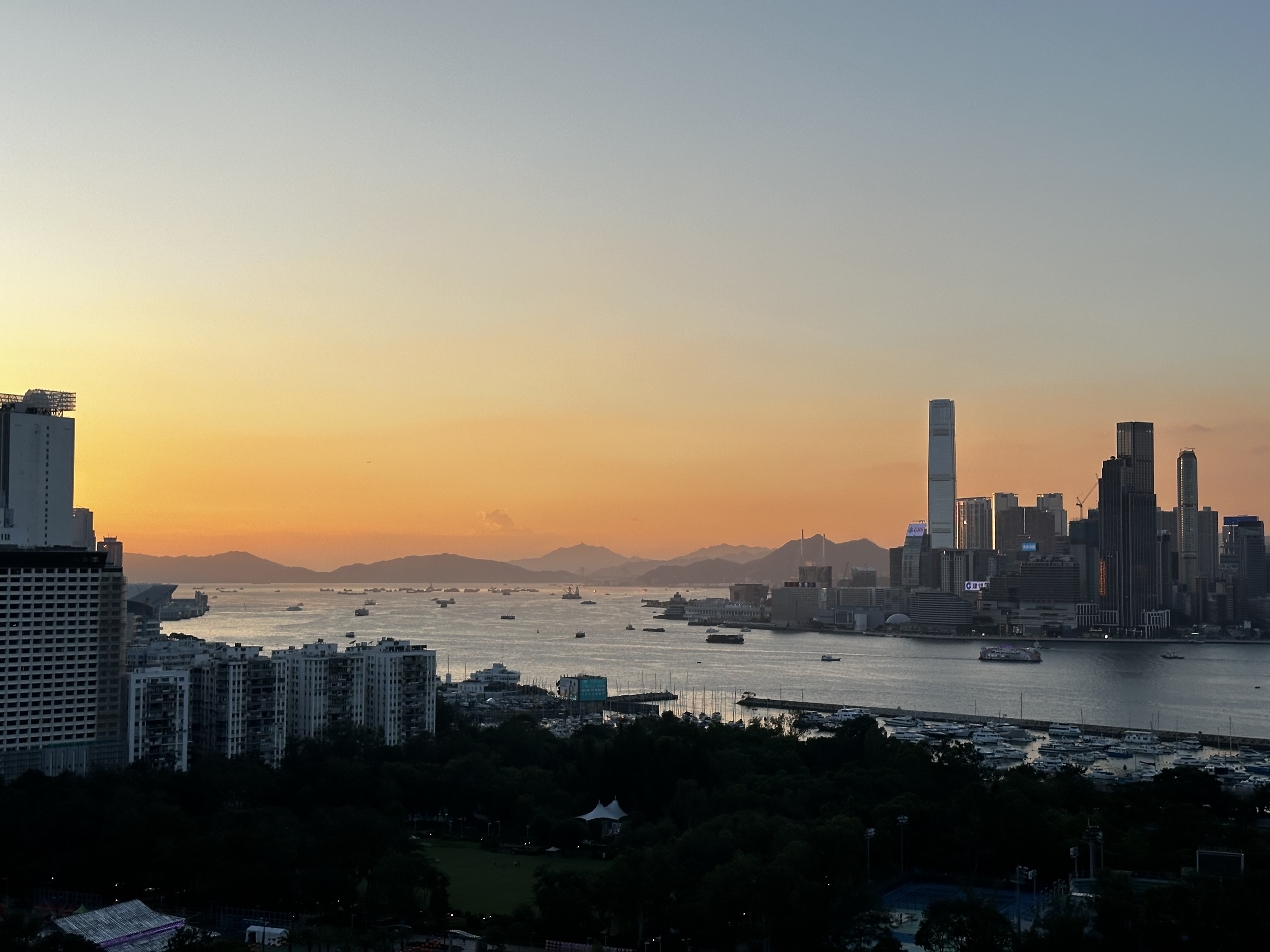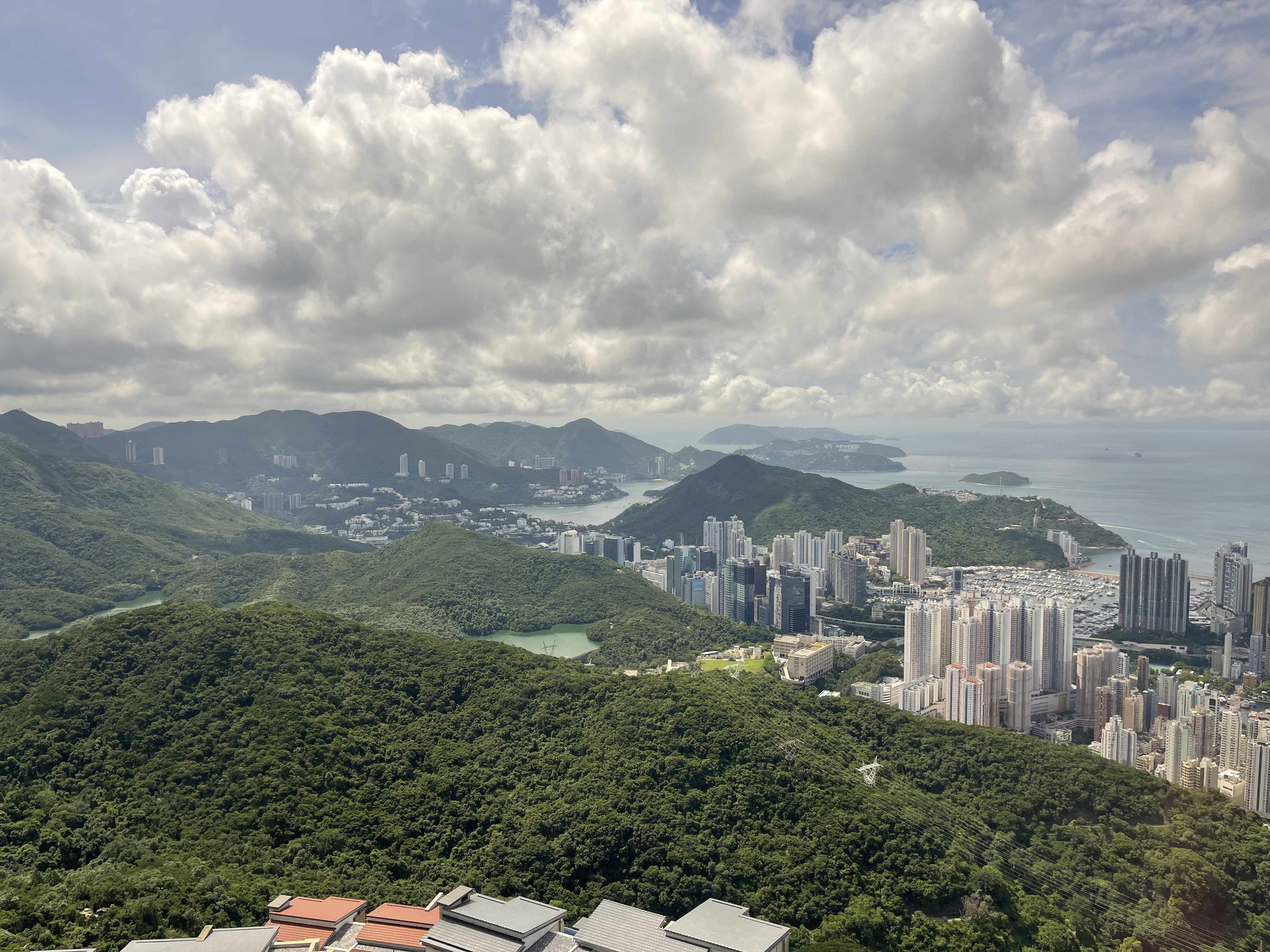For two years, we have the kind of view that I will never be able to capture adequately, never be able to share completely. From our vantage point we watch the rain roll in from the north, pour down on distant islands and sweep over Kowloon until it obscures one of the world’s tallest buildings, until it finally pushes across sports fields and the park to crash against our glass-walled box. As the view disappears I feel lucky to be alive.
Looking left, up the hills of Hong Kong island towards the towers of Leighton Hill, Beverly Summit, and Jardine’s Lookout, I play a game, unfocusing my eyes against the mass of towers. I watch windows, elevators, and stairwell lights flick on and off, looking at the patterns rather than the details, creating my own personal pixel art. A few seconds unfocused like this are enough to see two or three lights turn on, or off. It’s beautiful in the way of Star Wars cities, of Bladerunner. The impossible density of Hong Kong made visible due to my height.
From the twenty seventh floor we can see twenty odd tennis courts, eight soccer pitches, three pools, six basketball courts, and two pickle-ball style short courts. Plus a running track, a school quad, the central library, and a half dozen hotels, office towers, and neon signs, all without considering the apartments, without considering the harbor, without considering Kowloon or the distant islands. The view is all encompassing, and the architects took advantage, constructing our entire tower on an angle so as to maximize it, and filling the walls with nothing but glass.
We will probably never have a view like this again. It’s a product of Covid, of us putting our travel budget into our apartment, of lowered rents, and of good jobs. Two years later it feels absurd, like something we should reconsider. We do.
Tonight, though, watching the rain sweep across the harbor, blotting out the neon temporarily, I know I’ll never forget this, and I’ll struggle to describe it. So I try, sitting on the balcony until the rain passes, eyes wide to memorize. And then I return to the table, to write while looking out at the Star Ferry, at M+ and the rest of TST, at Langham Place all the way out in Mong Kok, and at the towers of Admiralty, just barely visible behind Times Square and Hysan in Causeway.
This is a lucky view. I can see probably 800 hotel rooms scattered among the towers, and the lightning that strikes the tallest one in front of me is four times its height. The cruise ships that pull past in the mornings are huge, and yet temporary against the mountains behind the city, against the peaks of Lantau visible on clear days.
The fireworks, when they happen, are just in front of the yacht club, which I have watched closely with binoculars, looking for boats bearing friends. The fireworks at Disneyland are visible on a clear day, small plumes on the horizon.
The flight path north out of HKG goes straight overhead, high enough to be beautiful rather than a nuisance, and we watch the varied liveries for fun. The tram line runs just in front, far enough away to likewise be picturesque but close enough to hear, sometimes, from the balcony. The elevated highway along the water, the new walkway out towards north point, the walk of stars along the TST waterfront, all these things are visible, and beautiful.
It is the kind of view filled with too much to write about, too much to describe. On Saturdays we watch the junk boats pull out from Central, carrying their party crews to bays out around the corners of Hong Kong. At sunset we watch the clouds, the sky, and the water change colors from bright to oranges and pinks, until at last the sun falls behind the mountains and everything fades into purples.
I don’t expect to have this view for long, and I will try to remember how much I’ve seen while sitting here, these past two years.
I’ve seen things, indeed.


